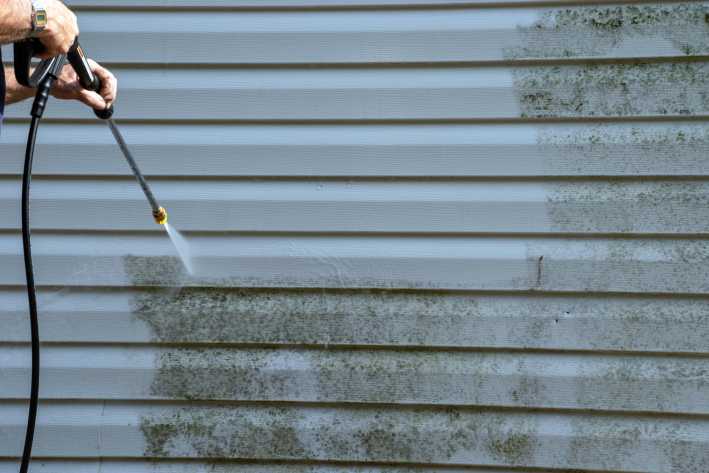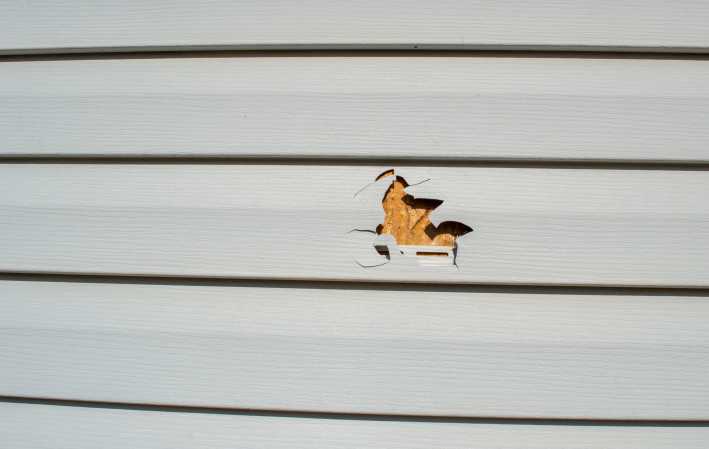
Cork flooring installation: Cost, ergonomics, and perform...
When it comes to design choice, the unmatched natural beauty and texture put cork flooring in a l...
A well-maintained and timely replaced siding is not just about keeping the home's curb appeal intact but also about protecting exterior walls from the elements and preventing moisture damage. Most siding materials are designed to be durable and long-lasting, with some types lasting up to 50 years or more. Nevertheless, the quality of the materials, level of maintenance, and other factors like a local weather pattern, pest infestation, etc., can reduce the expected service life of the siding. This means investing in durable and well-insulating material that meets the regional climate variabilities is in your best interest.

There are a couple of things to consider when selecting the type of siding material you want to upgrade to. Siding materials vary in levels of moisture and wind resistance. They can respond differently to extreme temperatures, moisture, fire, and UV rays. Factors like energy efficiency, versatility, and DIY-friendly installation should also be considered while making a choice.
The abundance of siding options may seem overwhelming at first. Still, by educating yourself with some material characteristics and installation tips, you can ultimately pick the type of vinyl siding that best fits your home. The insights of our siding professional laid the basis for this guide so you can get yourself ready to make the final buying decision.
If you seek a more detailed consultation after investigating this buying guide, consider filling out the request form at https://www.myhomequote.com/siding. We'll automatically match you with siding contractors serving in your region.
PVC siding, or vinyl siding, is a type of exterior cladding material made from polyvinyl chloride, a synthetic plastic material that is lightweight, durable, and relatively easy to install. PVC requires no painting or caulking and comes in multiple colors and textures. In addition, you can pick from standard lengths with straight edges, scalloped edges, or other kinds of decorative edges.
PVC siding is a popular choice for its low maintenance requirements, as it is resistant to rot, moisture, and insect damage. Vinyl panels are designed to overlap slightly, creating a seamless appearance and providing additional protection against the elements. They also mimic the look of wood, stone, or other natural materials, creating an authentic exterior look.
Besides, vinyl siding is a cost-effective solution. The average vinyl siding cost per square foot goes from $3 to $10.75. It is 11% less than cedar siding and 26% less than aluminum. Nevertheless, this siding material offers relatively good durability for its cost, enhancing the building's curb appeal.
Installation of PVC siding typically involves attaching the individual panels to the exterior of the building using nails or screws. So, ease of installation is another advantage that makes homeowners choose the direction of this material rather than shelling out on wood shakes. Moreover, vinyl is easy to clean. All you need is a high-pressure power washer to get off mildew, dirt, and other stuck-on debris.

An advantage of vinyl siding is its versatility. It can be molded into many different shapes and textures to mimic the look of other siding styles, such as wood, stone, brick, clapboard, or cedar shakes. Vinyl replacement siding is a great way to transform your home's look and enhance its curb appeal. There are a wide variety of colors available with all of these vinyl siding types, so you can create your dream home easily.
Check out the list below for the primary types of vinyl siding and their distinctive features.
Another type of vinyl siding you could consider for your home is a style called Board and Batten. It comes in a vertical pattern with pieces of siding in various widths. The boards are placed vertically and then separated by a thinner vertical strip called the batten. These two pieces together make up the Board and Batten design. It can add a great deal of dimension to one's home and create a unique look. Board and Batten styles can work on various home styles – from the traditional with cottages and barns to more contemporary. Like regular vertical siding, it can be used to accent some parts of the home as well.
Siding of this type looks like pieces of wood from a log overlapping one another to cover the home. As there is a great texture with vinyl replacement siding now, most people can't tell the difference between a vinyl shake and a wood shake. Shakes, like other siding styles, can work in two different ways. They can make a dramatic statement when used for the entire home. Additionally, they can provide a nice accent when used on just one portion of the house, whether that is just the front or just on dormer windows if you have them. However you decide to use shake siding, you are sure to create a distinctive look for your home.
When you think of siding, you most likely imagine a home with traditional lap siding. Also known as clapboard, traditional lap siding is a common, horizontal siding style with overlapping planks.
The top of each plank is narrower than its wide bottom, forming a wedge. Each plank's thin top is tucked underneath the thicker bottom of the plank that's above it, creating a slight shadow beneath each horizontal plank.
The most popular type of vinyl siding is Dutch Lap. This style was first used in the early settler days, and its origins trace back to Northern Europe. Dutch Lap siding has a decorative groove atop the board and creates beautiful shadow lines. The groove provides a look of greater depth and dimension and adds character to the home. Vinyl siding technology has come a long way, so your Dutch Lap siding will most likely have the look of real wood, also adding to the charm of your home's exterior.
Not only does the decorative groove provide a nice look, but its design and shape also add strength to the siding, so it's less likely to appear wavy down the line. When you are replacing your siding, you want the lines to be completely straight, not only when first installed but for years to come. If you want a classic, clean look for the outside of your home, Dutch Lap is probably the type of vinyl siding you will most enjoy.
This siding type can be used for an entire house if that's the look you are going for. More people choose to use scallops to accent the upper floor of their homes, eaves, gables, and dormers. Scalloped siding consists of half-round shingles, and the round edges can break up the pattern on your home if you have a lot of vertical or horizontal lines. Many Victorian homes feature scalloped siding, which is used to accent different architectural features and is often in a different color than the siding on the rest of the house. Regardless of how you use scallops, you'll be sure to create the look you've always wanted.
This variation of vinyl siding is a great option for your home if you are looking to accent a particular area, break up the façade of your home, or can be used all over for a contemporary look. When used as an accent element, vertical siding is most used in entryways, porch walls, gables, and even dormers. While vertical siding is typically considered a modern design element, you can also create a rustic barn look depending on the style of your home and the color you choose. If you've always wanted that old farmhouse look but with modern conveniences and easy maintenance, vertical siding can help you create that look.

Vinyl is unpretentious in care, yet it requires some general upkeep to look its best for decades. Here are some tips for maintaining and cleaning vinyl siding:
Vinyl siding is the top choice for exterior cladding in the US due to its versatility, cost-effectiveness, and aesthetic appeal. This material offers many advantages for homeowners seeking to enhance their homes' curb appeal while saving on maintenance and installation.
Let us plunge into the major benefits of vinyl siding:
Homeowners who prioritize affordability and low maintenance when looking for siding options like vinyl might ignore the downsides of the material. Unfortunately, the negative aspects of vinyl siding might be critical in certain circumstances. That is why one should be aware of them before making the final buying decision.

The cost of vinyl siding can vary widely depending on factors such as the size of the home, the quality of the siding, and the complexity of the installation. However, according to the latest surveys, the national average cost for mid-range vinyl siding replacement is approximately $16.634 for a 1.500-square-foot home. A full-fledged vinyl siding installation project might cost as low as $4.999 per project or as high as $18.500. The cost per square foot for vinyl siding ranges between $2.50 and $11. This includes the cost of materials and labor.
Remember that this is just an average, and actual costs may be higher or lower depending on your location and specific project requirements. If you want to get more than an average vinyl siding cost per square foot but a relevant estimate based on the square footage of your house, the type of vinyl you have selected, and the local labor rates, contact us via the request form.
The footage of your home is not the only factor affecting the overall cost of a siding installation project. The quality of the material, its texture, style, and manufacturing company will correlate with the cost. Repairing or removing existing siding to replace it with new panels will also increase the overall cost. Another factor that might add to the average vinyl siding cost per square foot is the architectural features of the house. If the building has dynamic features or multiple angles, siding professionals will charge you an additional fee that might raise the overall project cost by 7-10%.
GET THE ESSENCE OF RELEVANT HOME
IMPROVEMENT TOPICS IN LESS THAN 5 MINUTES

When it comes to design choice, the unmatched natural beauty and texture put cork flooring in a l...

For homeowners who want the very best fiber cement siding, James Hardie has the top-performing fi...

Stay tuned!